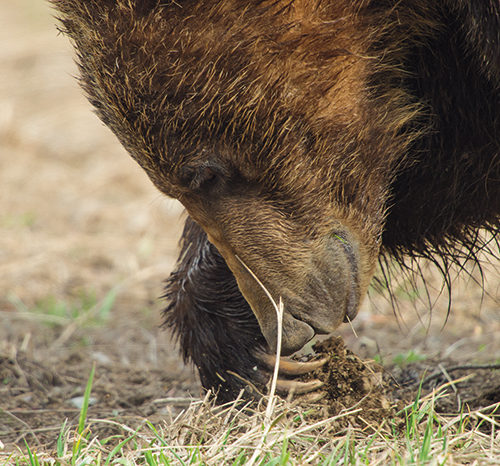Grizzly reintroduction in the North Cascades: Make your voice heard!

Public Invited to Open Houses on Proposed Alternatives for Grizzly Bear Restoration in North Cascades Ecosystem
Public comment period open through March 14, 2017
The National Park Service (NPS) and U.S. Fish and Wildlife Service (FWS) invite the public to participate in a series of informational open houses regarding the proposed alternatives for the restoration of grizzly bears to the North Cascades Ecosystem. The alternatives are described in the draft Grizzly Bear Restoration Plan/Environmental Impact Statement (draft EIS), released today by the two agencies. The meetings are one part of the public’s opportunity to comment on the draft EIS.
The purpose of the EIS is to determine what actions, if any, should be taken to restore the grizzly bear to the North Cascades Ecosystem. Although there are six populations of grizzly bears in North America, the last-known siting of grizzlies in the United States portion of the North Cascades Ecosystem is 1996. The goal of the public comment period is to gather comments regarding the draft EIS; public comments received on the draft EIS will be evaluated and considered in the identification of the preferred alternative, which will be published in the Final EIS. The full draft EIS is available at http://parkplanning.nps.gov/grizzlydeis.
The alternatives analyzed in this draft EIS include a “no-action” alternative, plus three action alternatives that would seek to restore a reproducing population of approximately 200 bears through the capture and release of grizzly bears into the North Cascades Ecosystem. The alternatives were developed by a planning team with input from the public, local, state and federal agencies, and the scientific community.
In addition to the open houses, the public also is invited to submit written comments at http://parkplanning.nps.gov/grizzlydeis. Comments may also be submitted through March 14, 2017 via regular mail or hand delivery at: Superintendent’s Office, North Cascades National Park Service Complex, 810 State Route 20, Sedro Woolley, WA 98284
In order to maximize opportunities for public input, webinars are scheduled for Tuesday, February 14 from 11 a.m.-1 p.m. Pacific Time and Sunday, February 26 from 5 p.m.-7 p.m. Pacific Time. For more information about the open houses and to register for the webinars, visit: http://parkplanning.nps.gov/grizzlydeis and click on the “Meetings” link.
The public open houses will be held from 6-8 p.m. at the following locations:
Cle Elum – February 13 at the Putnam Centennial Center
Cashmere – February 14 at the Riverside Center
Winthrop – February 15 at the Red Barn
Omak – February 16 at the Annex Facility at Okanogan County Fairgrounds
Bellingham – February 21 at the Oxford Suites
Darrington – February 22 at the Darrington Community Center
Sultan – February 23 at the Sultan High School
Renton – February 24 at the Renton Community Center
The grizzly bear was listed as a threatened species in the contiguous United States in 1975. The species was listed as endangered by the state of Washington in 1980.
The North Cascades Ecosystem encompasses 9,800 square miles in the United States and another 3,800 square miles in British Columbia, Canada. The United States portion of the ecosystem includes North Cascades National Park, Ross Lake National Recreation Area, Lake Chelan National Recreation Area, Okanogan-Wenatchee National Forest, and Mt. Baker-Snoqualmie National Forest.
The U.S. Forest Service and the Washington Department of Fish and Wildlife are cooperating agencies on the EIS. Funding for the EIS is provided by the NPS. The U.S. Forest Service, FWS and other cooperating agencies and partners will provide technical support throughout.
For more information on grizzly bear recovery, visit http://bit.ly/NCEgrizzly or www.nps.gov/noca/grizzly.htm.
To read North Cascades Institute’s support for grizzly bear reintroduction, visit http://ncascades.org/discover/north-cascades-ecosystem/grizzly-bear-restoration-plan.

